VALOR
SERGEANT SERGEANT NORMAN

FRANK
HENRY NORMAN
FRANK HENRY
MORE THAN A MEDAL DOCUMENTARY MORE THAN A MEDAL DOCUMENTARY




SERGEANT SERGEANT NORMAN

FRANK
HENRY NORMAN
FRANK HENRY
MORE THAN A MEDAL DOCUMENTARY MORE THAN A MEDAL DOCUMENTARY



Screenings of the documentary “More Than a Medal” have continued over the past months across the nation. The film, which was produced by Lame Deer Films in cooperation with Park University’s George S. Robb Centre for the Study of the Great War, interweaves the efforts of the researchers working against time, untold heroic stories of courage on the battlefields of France, on the seas and in the air, and the experience of modern-day descendants as they maintain cautious hope of recognition.
I appreciate our professional relationships with the following venues that screened the documentary in 2022: National World War I Museum and Memorial, Kansas City, Mo.; First Division Museum at Cantigny, Wheaton, Ill.; Robert R. McCormick Foundation, Chicago, Ill.; National Museum of the United States Army, Fort Belvoir, Va.; U.S. Navy Museum and Memorial, Washington, D.C.; and Sequoyah National Research Center at the University of Arkansas at Little Rock.
Attendees of the screenings have commented on the depth of staff research and the overall personal narratives of the represented servicemembers and their descendants.
“More Than a Medal” was selected to be shown at the St. Louis International Film Festival and Veterans Film Festival, San Francisco. These selections were not only testaments to the narratives of the servicemembers, their descendants and Robb Centre staff research, but also the acts of valor undertaken by the 214 servicemembers currently under research
I invite interested individuals to visit the Robb Centre’s website at gsr.park.edu for information about future screenings in New York City, Philadelphia and the Kansas City area. Admission to the screenings are free and open to the public.
Finally, Robb Centre Director Dr. Tim Westcott announced in his message in this edition of Valor the departure of Josh Weston. I express my deepest appreciation for Josh’s dedication and service to the Robb Centre and Park University. We are proud to count him as a Park alumnus.

 Shane B. Smeed President Park University
Shane B. Smeed President Park University
Country music songwriter Bobby Braddock’s and singer Tracy Lawrence’s “Time Marches On,” furnishes a daily reminder that life is in constant motion.
I write that Josh Weston, who served the George S Robb Centre for the Study of the Great War as its Senior Military Analyst from 2018-22 while he worked to complete his bachelor’s degree from Park University, and most recently as its Associate Director of Military Research, has decided to pursue other opportunities.
Josh joined the Robb Centre in 2018 as a transfer freshman, when work commenced with the World War I Centennial Commission to draft and enact federal legislation related to the Valor Medals Review Project and Task Force.

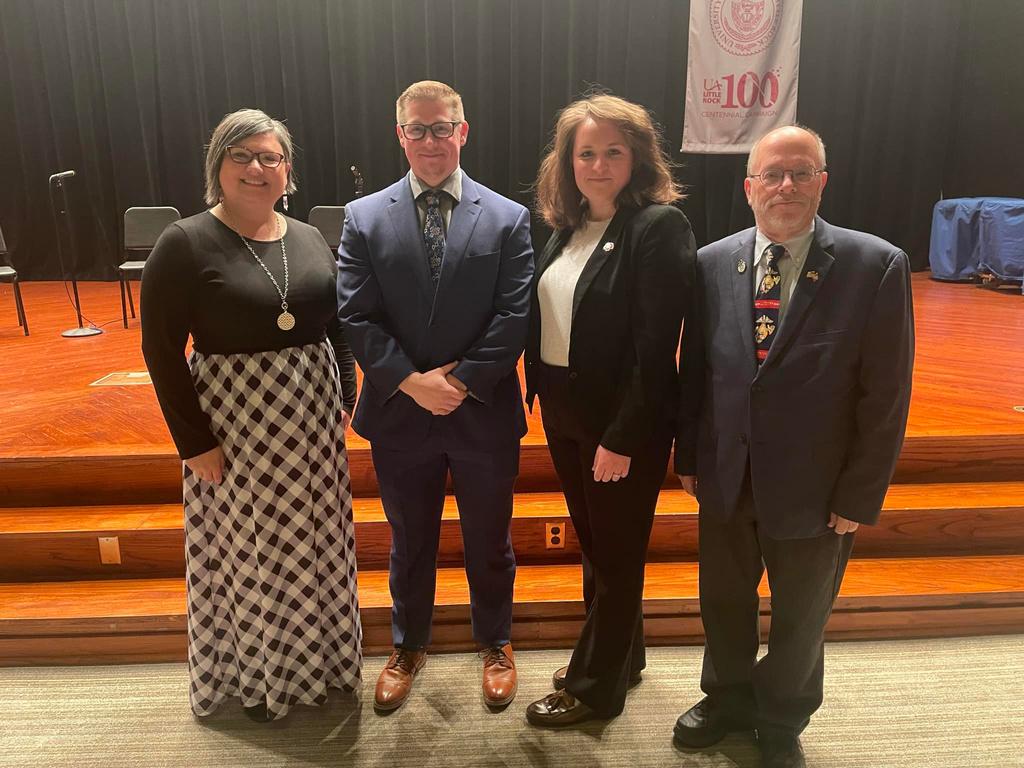
Josh was instrumental in researching each confirmed servicemember’s military background, unit history and act of valor for consideration and submission to the U.S. Army and U.S. Navy. He led a dedicated staff of Park University, Park Hill High School (Kansas City, Mo.), and other institutional interns over these years and mentored them in historical research and writing. In addition, Josh was a foremost contributory to the Robb Centre’s documentary “More Than a Medal” and traveled extensively for the film’s screenings across the country.
Josh will be greatly missed by Robb Centre staff, past and present I wish him and his family well in all future endeavors
Timothy Westcott, Ph.D. Director George S. Robb Centre for the Study of the Great War Park University
George S. Robb Centre for the Study of the Great War Park University
“ T h e l a s t q u a r t e r - c e n t u r y h a s f i n a l l y w i t n e s s e d s i g n i f i c a n t s t r i d e s i n t h e f u l l i n t e g r a t i o n o f b l a c k p e o p l e i n t o e v e r y a r e a o f n a t i o n a l l i f e I n c e l e b r a t i n g B l a c k H i s t o r y M o n t h , w e c a n t a k e s a t i s f a c t i o n f r o m t h i s r e c e n t p r o g r e s s i n t h e r e a l i z a t i o n o f t h e i d e a l s e n v i s i o n e d b y o u r F o u n d i n g F a t h e r s B u t , e v e n m o r e t h a n t h i s , w e c a n s e i z e t h e o p p o r t u n i t y t o h o n o r t h e t o o - o f t e n n e g l e c t e d a c c o m p l i s h m e n t s o f b l a c k A m e r i c a n s i n e v e r y a r e a o f e n d e a v o r t h r o u g h o u t o u r h i s t o r y ” P r e s i d e n t G e r a l d F o r d , 1 9 7 6
“ A l o n g w i t h a v a s t a r r a y o f s k i l l s , A m e r i c a n s o f A s i a n a n d P a c i f i c I s l a n d a n c e s t r y b r o u g h t t h e i r r e m a r k a b l e t r a d i t i o n s o f h a r d w o r k a n d r e s p e c t f o r f a m i l y a n d e d u c a t i o n t o t h e i r n e w c o u n t r y . T h e i r b e l i e f i n t h e A m e r i c a n D r e a m , o f e q u a l i t y a n d o p p o r t u n i t y e n a b l e d t h e m t o f a c e t h e c h a l l e n g e s o f a d v e r s i t y a n d d i s c r i m i n a t i o n a n d a c h i e v e a r e c o r d o f d i s t i n g u i s h e d s e r v i c e i n a l l f i e l d s T h e s e p e o p l e a n d t h e i r c h i l d r e n m a n a g e d t o p r e s e r v e t h e r i c h l e g a c y o f t h e i r h o m e l a n d s w h i l e a l s o e m b r a c i n g t h e b e s t v a l u e s a n d t r a d i t i o n s t h a t d e f i n e o u r N a t i o n ” P r e s i d e n t B i l l C l i n t o n , 1 9 9 7
“ A c u t e l y c o n s c i o u s o f t h e d a n g e r s o f r a c i s m , p r e j u d i c e , a n d p o l i t i c a l o p p r e s s i o n , A m e r i c a n J e w s h a v e b e e n s t r o n g a n d e f f e c t i v e a d v o c a t e s i n t h e c a u s e o f s o c i a l j u s t i c e T h e y h a v e d e d i c a t e d t h e i r e n e r g i e s , t a l e n t s , a n d r e s o u r c e s t o e n s u r e t h a t o u r N a t i o n l i v e s u p t o i t s p r o m i s e o f e q u a l i t y , m a k i n g a l a s t i n g i m p a c t i n t h e s t r u g g l e f o r c i v i l r i g h t s , l a b o r r e f o r m , a n d w o m e n ’ s e q u a l i t y ” P r e s i d e n t B i l l C l i n t o n , 1 9 9 8
T h e G e o r g e S . R o b b C e n t r e i s h o n o r e d t o p a r t i c i p a t e i n A f r i c a n

A m e r i c a n H i s t o r y M o n t h , A s i a n / P a c i f i c I s l a n d e r A m e r i c a n H e r i t a g e M o n t h , a n d J e w i s h A m e r i c a n H e r i t a g e M o n t h t h r o u g h t h e V a l o r M e d a l s R e v i e w P r o j e c t , i n w h i c h v e t e r a n s o f W o r l d W a r I a r e h o n o r e d f o r t h e i r s e r v i c e T h e s e s e r v i c e m e m b e r s h a v e q u a l i f i e d f o r i n v e s t i g a t i o n o f t h e i r a c t s o f v a l o r t o d e t e r m i n e i f t h e i r a c t i o n s m e r i t a p o t e n t i a l u p g r a d e t o t h e M e d a l o f H o n o r W e a r e e x t r e m e l y p r o u d t o b e t h e h o m e o f t h i s e n d e a v o r , a n d a r e c o n t i n u o u s l y r e m i n d e d o f t h e i m m e n s e r e s p o n s i b i l i t y w e h a v e t o c o n t i n u e t h e l e g a c y o f t h e s e s e r v i c e m e m b e r s .
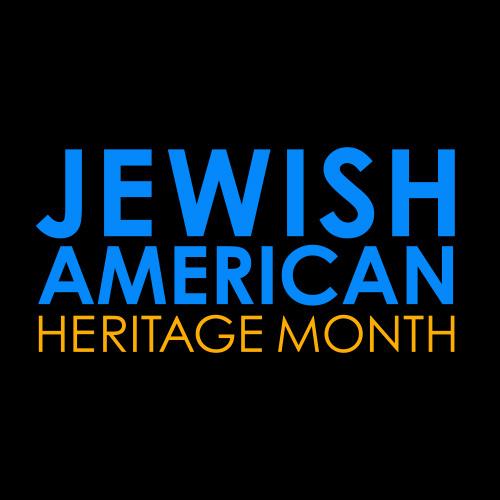

Born: Nov. 5, 1892
Hometown: Girard, Kan.
Death: Oct 22, 1942 (age 49)
Burial: Wood National Cemetery, Milwaukee, Wis
Race: African American
Branch of Service: Infantry
Unit at time of action: Corporal, Company M, 3rd Battalion, 370th Infantry Regiment Detached from: 185th Infantry Brigade, 93rd Division Attached to: French 36th Division
Locations of Service: Enlisted on Dec 13, 1917. Joined Company M, Camp Logan, Houston, Texas.
In March 1918, the 370th left Camp Logan for Newport News, Va. On April 6, the regiment sailed on the USAT President Grant for France. Brest, France, April 22, 1918.
St. Mihiel Sector (Lorraine), June 21-July 3, 1918.6 Air Sector, Argonne Forest, July 6. Vraincout, July 22. Hospitalized in France. USAT SS Leviathan from Brest France, Oct. 9, 1918, to Ellis Island, N.Y., Oct. 16, 1918.
Discharged from the U.S. General Hospital in Des Moines, Iowa, on May 23, 1919.
"When, on July 22, 1918, a hand grenade was dropped among a group of soldiers in a trench, and when he might have saved himself by flight, he attempted to cover it with his foot and thereby protected his comrades. In the performance of this brave act he was severely wounded"
Isaac Valley’s father, Moses, was born in 1849 as a slave in Fredericktown, Mo Moses came to Kansas after the Civil War In 1877, he married Rachel Clark in Sparta, Ill She was also from Fredericktown In the 1880s they made their home at Andrews Farm west of Girard, Kan They had nine children 9, 10 Isaac was born on Nov 5, 1891, in Girard 11 When Isaac was 10 years old, his father died of typhoid fever on Sept 19, 1902
Valley enlisted on March 9, 1912, at Jefferson Barracks, Mo., for three years. He joined Company E, 24th Infantry. They had been in the Philippines since 1911. Company E arrived on March 7, 1913, for garrison duty at Camp Stotsenburg, Pampanga, Philippines. They shipped out for maneuvers at Corregidor on May 22. On July 11, they had garrison duty at Fort Mills, Corregidor. In April 1914, they went to the target range at Fort William McKinley, Rizal, and came back at Fort Mills in June.
Pvt. Valley, per General Court Martial of July 13, 1914, was in confinement awaiting trial since Aug. 13. On Sept. 4, he was sentenced to be confined for three months and to forfeit $10 per month by General Court Martial Order. He would be confined at the guard house. On Oct. 26, he was placed on probation according to Army Regulations 943. After a garrison prisoner had served one-half of his sentence, he could submit to the commander of the post a request to be put on probation. Once granted, the soldier would be restored to duty.
Valley left Company E, 24th Infantry, on Jan. 5, 1915, from Camp John Hay, Philippines, en route to Fort McKinley in view of being sent to the U.S. for discharge. Valley joined the 1st Company, Casual Detachment, 24th Infantry, shipping out from Manila, Philippines, on the U.S. Transport Logan on Jan. 15, 1915. This ship stopped for a day at Nagasaki, Japan, and Honolulu, on the way to arriving in San Francisco on Feb. 14, 1915.
Valley was honorably discharged on Feb. 18,1915, at Fort McDowell, Calif., per short remaining term for the convenience of the government Service honest and faithful, character very good, no absence without leave He returned to Girard as a farm laborer He registered for the draft on June 5, 1917 Valley joined Company M of the 370th Infantry on Dec 13, 1917 Company M had been in the 8th Illinois Infantry, National Guard, in Metropolis, Ill At Camp Logan, the 8th Infantry had been re-designated the 370th Infantry, National Army of the United States This was the only regiment that had a full complement of African American officers
One of Valley’s officers was 1st Lt William J Warfield (featured in Valor magazine, March 2022)
There had been a riot in Houston on Aug. 23, 1917, when white police officer Lee Sparks beat and jailed Pvt. Alonzo Edwards and Cpl. Charles W. Baltimore of the 3rd Battalion, 24th Infantry. The soldiers rioted and four of the 24th Infantry and 15 white civilians were killed. All 156 soldiers of the 24th Infantry in Houston were court-martialed for murder, and 13 of those convicted were hanged. White citizens remained hostile toward the 370th Infantry, but there were no further incidents. To remove the 370th Infantry from the potentially hostile environment, the regiment entrained from Camp Logan to arrive at Camp Stuart, near Newport News, Va., on March 10, 1918. While at Camp Stuart, Lt. James H. Johnson was discharged and Maj. Otis B. Duncan was promoted to lieutenant colonel. Duncan had commanded the 3rd Battalion, so Capt. Arthur Williams was promoted to major and given command of the 3rd Battalion, including Company M.
On April 6, 1918, at 5 a.m., the regiment marched from their barracks to Pier 3 and the good ship George Washington. It was 11 a.m. before they were finally loaded aboard. In all, there were 5,000 men, including the 370th Infantry, the 371st Infantry of drafted men and 500 men of a labor battalion. Chaplain William S. Braddan called this a “slave battalion,” these engineers were worked at high gear by their white noncommissioned officers from morning to night
The ship slipped its cables on Saturday night and was towed out to midstream On Sunday at 3:30 p m , the engines started up, but within half an hour there was a harsh grating sound The ship ran aground on a sandbar, and it was stuck until enough tug boats could ram and pull the huge transport to the sea When they were off, the soldiers began singing “Over There!” The next Saturday, April 20, the ship entered the “danger zone,” where the dreaded submarines operated All hands were ordered to wear their life belts and stay near their assigned life rafts. A fleet of seven “sub chasers” darted about protecting the troop ship. On Monday, April 22, they were happy to see land again at Brest, France. The troops stayed at Pntenuzon Barracks for two days, and then marched to load onto box cars labeled “8 Chevaux, 40 Hommes.” With 40 men piled into each car, they traveled two days to Morvilla and marched three miles to Grandvillars in Lorraine. The Alsace-Lorraine territory had been held under German domination for nearly 50 years, since the Franco-Prussian War of 1870. The 370th Infantry was brigaded with the French 37th Brigade, 40th Division, Seventh Army. They turned in their American equipment and were issued French rifles and blue helmets, everything except for the uniform.
Braddan wrote about the food:
“You have never seen any bread until you have seen this Pon. I don’t know what it is made of, but I do know that there is no flour in it. At first, I looked at it with disgust, then as I grew hungry, I picked the straw out of it and went to it. But you must eat it like Limburger Cheese, shut your eyes, take a bite, and let it go at that.”
French rations consisted of food sufficient for about two meals per day, while American rations had provided for three meals per day Sugar was substituted for the wine component of the French rations French cooks instructed the African American cooks
The 370th Infantry was attached to the French 73rd Division, and on May 19, continued training with the French 133rd Division On June 1, they joined the French 10th Division at the Swiss border From June 17 to July 5, the regiment participated in the occupation of the St Mihiel Sector joining the French 34th Division On July 5, the regiment moved to Auzeville, in the Argonne Forest, to join the French 36th Division On July 7, the regiment participated in the occupation of the Aire Sector. Elements would serve in the front line, near Vauquois.
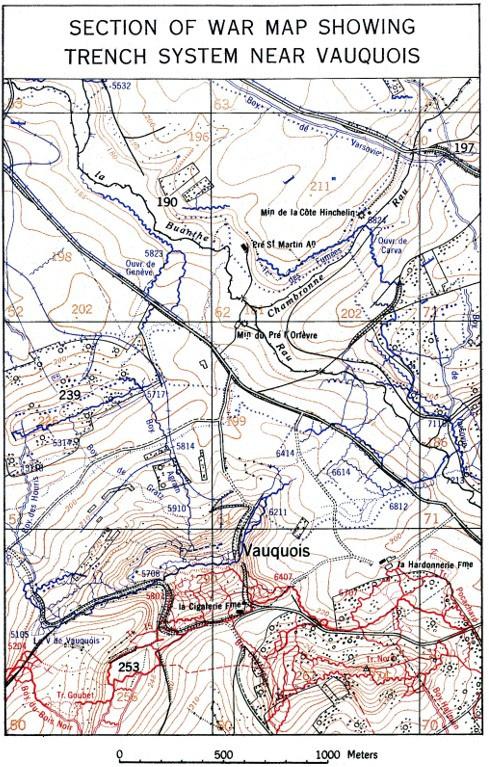
Shortly after July 12, the regiment began moving battalions into the line. The men continued to train in combat situations.
Maj Arthur William’s 3rd Battalion was billeted at Vraincourt and placed in reserve in the Argonne Forest. The men performed the usual frontline activities manning outposts and sending patrols into no-man’s-land, the area between Allied and German front lines The sector of the Argonne Forest occupied by the 370th Infantry was exceptionally quiet at that time, except on two occasions
Just before noon on July 14, Pvt Robert E Lee of the 2nd Machine Gun Company was killed by heavy German artillery fire, marking the beginning of the enemy offensive.
Valley received the Distinguished Service Cross for his actions on July 22, 1918. When a hand grenade was dropped among a group of soldiers in a trench, and when he might have saved himself by flight, he attempted to cover it with his foot and thereby protected his comrades. In the performance of this brave act, he was severely wounded.
Trench map called “plan directeur ” Allies are shown in red, Germans in blueFind A Grave website, Isaac Valley: https://www.findagrave.com/memorial/2929108/isaac-valley. Accessed 5/27/2022.
Isaac Valley’s Distinguished Service Cross citation. G.O. No. 101, W.D., 1918. American Decorations, (War Department, Office of the Adjutant General, Washington, D.C., 1927), page 606.
Frank E. Roberts, The American Foreign Legion, Black Soldiers of the 93rd in World War I, (Naval Institute Press, Annapolis, Md.D, 2004), pages 72-75.
“Muster Roll of Company M, 370th Infantry, 31st December 1917 to 28th February 1918.” The Catalog, National Archives and Records Administration http://www.archives.gov/id/ “Monthly Roster of Company M, 370th Infantry, July,1918.” (Sick in hospital, France.)
William S. Braddan, Under Fire with the 370th Infantry (8th I.N.G.) A.E.F. Memoirs of the World War, (Published by W.S. Braddan, Captain-Chaplin 370th Infantry, Major, 8th Ill. N.G. Pastor of Berian Baptist Church, Chicago, Ill. [1927], reproduction by The War College Series), pages 47-48.
Emmett J. Scott’s American Negro in the World War (1919), 214-230, 317, 319.
“Monthly Roster, Company M, 370th Infantry, France, 31 July 1918.” http://www.archives.gov/id/
Isaac Valley, Military History (form 52022, 1927); “USAT SS Leviathan” http://www.archives.gov/id/
“USAT SS Leviathan” http://www.archives.gov/id/
Find A Grave website, Moses Valley: https://www.findagrave.com/memorial/94882885/moses-valley. Accessed 5/27/2022.
10. Find A Grave website, Rachel Valley: https://www.findagrave.com/memorial/95388528/rachel-valley. Accessed 5/27/2022.
12. Find A Grave website, Isaac Valley. https://www.findagrave.com/memorial/2929108/isaac-valley. Accessed 5/27/2022.
The Catalog, National Archives and Records Administration http://www.archives.gov/id/. https://catalog.archives.gov/id/149692128.
28 Feb to 30 April 1913, Enlisted Mch 9/12. {1913 Pres. Woodrow Wilson, P.I. closer to independence.} Maneuvers at Corregidor
May 22, 1913. Through July 11. {At Jolo the Moros were beaten on June 15, 1913.}
Then garrison duty at Fort Mills, Corregidor.
Target range Fort Wm. McKinley, April 1914. Ft. Mills June 1914.
30 June 1914 to 31 August 1914. {France declared war on Aug 3, 1914.}
31 August to 31 October, 1914. {Confinement July 13, probation Oct 26.}
31 December to 28 February, 1914. {Left Co.}
28 February to 30 April, 1914. {Hon. Disch. No AWOL.}
National Archives Identifier: 149692128 149692128 War Department. 1789-9/18/1947 (Most Recent)
Series: Muster Rolls and Rosters, 11/1/1912 - 12/31/1943
Record Group 64: Records of the National Archives and Records Administration, 1789 - ca. 2007
Regulations for the army of the United States, 1913, by the US War Dept. United States Transport Logan, Jan 15, 1915, Casual Detachment 24th Infantry. Passenger List. Fold 3. https://www.fold3.com/image/604049303
[Det.]; Fold 3. https://www.fold3.com/image/604049319; [Leaving, arriving] Accessed May 2022.
Registration Card
Michael Lee Lanning, The African-American Soldier, from Crispus Attucks to Colin Powell, (Birch Lane Press, Carol Publishing Group, Secaucus, NJ, 1997).
“Private Gus Williams,” by Lisa Dretske, (2009, McLean County Museum of History, Bloomington, IL.) http://mchistory.org/research/resources/gus-williams.php. 5/1/2017.
W. Allison Sweeney, History of the American Negro in the Great World War, (Negro University Press, NY). Order of Battle of the United States Land Forces in the World War, American Expeditionary Forces, Divisions, (USGPO, Washington, 1931).
American Armies and Battlefields in Europe, (Center of Military History, U.S. Army, Washington, D.C. 1992). Pages 217, 221 and 503.
In April 1917, the British Army requested medical assistance in the form of personnel, equipment, and supplies for the conflict in Europe. As part of the U.S. National Defense Act of July 1916, the Department of Military Relief was formed and worked with the American Red Cross to organize fifty base hospitals from civilian university hospitals throughout the United States. After the United States declared war on April 6, 1917, six of these units sailed to England and thence to France. Among them were Base Hospitals # 2, Presbyterian Hospital, New York, # 5, Harvard University, Cambridge, Massachusetts, and # 10, Pennsylvania Hospital, Philadelphia.
Professionally the American nurses were trained to the highest standards of the time. They served in several roles, including as members of operating teams in more forward casualty clearing stations. Julia Stimson stated, “Only the most competent and dependable nurses were with mobile units in forward areas ” The staff from the hospital units arriving from the United States were “lent” to the British Army; thus, American nurses staffed British hospitals and Casualty Clearing Stations
Casualty Clearing Stations (CCS), located several miles behind the frontlines, were the conduit to base hospitals These were the mobile units Julia Stimson referred to when looking at the most competent nurses The CCSs were grouped into two or three; one could handle sick patients before transport, while the other could receive battle casualties The clearing stations were never long-term care facilities, and the staff worked long hours to stabilize patients to return to the battlefield or travel to a hospital in the rear. In this type of facility, caught in the crossfire of World War I, three U.S. Army Nurses and one Red Cross Nurse were awarded the Distinguished Service Cross (DSC), America’s second highest award for combat military service.
Beatrice Mary MacDonald was born on September 27, 1881, in North Bedeque, Prince Edward Island, Canada. She immigrated to the United States in 1902 and, in 1905, was at the Metropolitan Training School for Nurses on Blackwell Island, New York. Beatrice trained as a surgeon’s aide. In 1915, she traveled to France, where she was a civilian, volunteered for four months with American Ambulances in Juilly, and returned to New York on September 16, 1915.
On May 13, 1917, she was called to active duty from civil life and sailed to France. She was at Base Hospital # 2 until July 22, 1917, and went to Casualty Clearing Station 61, near Ypres, Belgium On the night of August 17, 1917, the Germans bombed the hospital, and shrapnel blinded Beatrice when it hit her in the face and right eye Helen McClellan saved her life by stopping the hemorrhage from Beatrice’s wound Eventually, Beatrice was evacuated to England with the other patients


Once recovered, Beatrice returned to care for soldiers in Belgium and France, stating, “I’ve only started my bit.” Beatrice was overseas from May 14, 1917, to February 9, 1919. Beatrice MacDonald was the first woman to be awarded the Distinguished Service Cross (DSC) on February 28, 1919. “A special act of Congress was necessary in order to confer this honor upon a woman.” The newspapers put Beatrice and another ANC member, Eva Jean Parmelee, at the same hospital because they were both from Massachusetts.
Both women received wounds in German air-raids; however, Parmelee was at Base Hospital # 5, where she was slightly wounded but not awarded a DSC.[v] The British Army awarded each of them the British Military Medal and Royal Red Cross Medal 2nd Class. Additionally, Beatrice would receive the French Croix de Guerre and, in 1936, become the first American female nurse to receive the newly reinstated Purple Heart.

Helen Grace McClelland was born in Austinburg, Ohio July 25, 1887, and graduated from the Pennsylvania Hospital of Nursing in 1912 In November 1915, she went to France to work at the American Hospital at Neuilly She volunteered for field service and spent eleven weeks at Casualty Clearing Station # 61 with British forces at Ypres, Belgium Sir Douglas Haig awarded Helen the British Royal Red Cross 1st Class medal for her excellent service In 1915, she returned to Philadelphia and resumed work at the hospital
On May 9, 1917, Helen was called up from civil life as a Reserve Nurse of the Army Nurse Corps and sailed with the Pennsylvania Hospital, Base Hospital #10 After several days of travel, Helen arrived at casualty clearing station # 61 two years after her first experience there. The next afternoon, Beatrice MacDonald arrived at the same station; “From the way we greeted each other, the British sisters [nurses] thought we were old friends, but we had not known of each other’s existence until we met there at the front”. When asked about saving Miss MacDonald’s life, Helen responded, “It was nothing really. Anybody would have done what I did. These actions and her unwavering duty to the Casualty Clearing Station while under fire earned Helen the DSC in July 1919. After returning from the war, Helen went to Protestant Hospital in Norfolk, Virginia, and served as assistant superintendent until 1926, then returned to her Pennsylvania Hospital roots, holding a similar position. She died December 20, 1984, the last of the WWI nurses honored with the Distinguished Service Cross. Her gravesite can be accessed through findagrave.com, as are the other three recipient’s resting places.
Jane Isabelle Stambaugh was born on August 15, 1879, in Mifflintown, Juniata, Pennsylvania. Isabelle, as she called herself, graduated from Presbyterian Hospital in Philadelphia in 1908, where she would later work for most of her career. She was also an “Army Nurse Corps Reserve” nurse and, in 1916, was on the Mexican Border with ten other nurses during the Mexican Expedition. On May 4, 1917, she was recalled from Base Hospital #4 at Eagle Pass, Texas, with orders to sail to France with Base Hospital #10. She sailed aboard the transport ship S.S St. Paul from New York City with Hellen McClelland.
Isabelle was sent forward from Base Hospital # 10 as a member of British Casualty Clearing Station # 32. When the big German drive on March 21, 1918, pushed the British back, she got lost in the evacuation and attached herself to Number 2 Stationary Hospital near Amiens. There, she was seriously wounded in the left leg by shrapnel. She was sent to England with the other wounded and returned to duty four months later at Base Hospital 10.

Isabelle left the embarkation port at Brest, France, on April 3, 1919, as a patient still not recovered from her original injury. She again sailed with Helen McClelland and arrived at Hoboken, New Jersey. Upon arrival, Isabelle went to the General Hospital at Fort McHenry in Baltimore, Maryland, for further recovery On June 4, 1919, after her wounds healed, she traveled to Washington, D C, to receive the DSC The British later awarded her the British Royal Red Cross Medal 2nd Class
Jane Jeffery was born in Newmarket, England, on September 28, 1881. Her aunt lived in Massachusetts, and she went there to learn nursing. Jane graduated in 1905 and attended various hospitals in New York for postgraduate internships between 1906 and 1909. On December 6, 1910, she became a Massachusetts Registered Nurse.
In 1916 she applied for Foreign Service with the American Red Cross, and by October 26, 1917, Jane was in Paris, assigned to the Children’s Bureau. On June 18, 1918, Jane requested a new assignment to be of greater service. She was sent to American Red Cross Hospital No.107 in Jouy-sur-Morin (Sein-et-Marne).[iii] In 1918 there was a shortage of trained nurses to help stem the tide of casualties pouring into the British Hospitals.


The Red Cross in Paris had to approve nurses to move, which could take up to ten days, while the American Army could make transfers in a matter of hours:
“At this time when the Red Cross Nurses in France were placed in hospitals under military control, they were all given the opportunity to become definitely attached to the military service… a number of them were sworn in, and they came immediately under military control and were paid by the Army. Miss Jeffery was one of several who did not care to do so. It is doubtful whether at the time, it was explained that if they did not take the oath and become part of the army, they would not be entitled to compensations and benefits, should they become disabled."
On July 15, 1918, German aircraft bombed the hospital. According to the Asbury Park Press, “Miss Jane Jeffery, the only Red Cross nurse who was wounded, was struck near the spine by a piece of metal…Miss Jeffery is not seriously hurt” However, Jane was severely injured by shrapnel in her back, as the passing years would show. The following day she was transported to the American Hospital of Paris, where she spent a year receiving treatment. On June 2, 1919, she was awarded the DSC, in France, by Brig. Gen. William Harts, and one month later, she was released from duty and returned to New York City.
Jane attempted to work for the next several years but could not perform her duties due to her injuries overseas During this time, correspondence went back and forth between the Red Cross and the U S Surgeon General’s office to get compensation for her injuries She never got a settlement
In many ways, these four distinguished women were all women of firsts. Their battlefield experiences, combat awards, and even their losses were some of the first notable experiences for women during World War I and as members of the Army Nurse Corps and the Red Cross. The distinction earned by Beatrice, Helen, Jane, and Isabelle is listed in the American Decorations Book of 1926, enriches the history of the U.S. military experience in WWI, and deepens our appreciation for women earning combat awards in the early twentieth century.
Jeffery Map
Mary T. Sarnecky. A History of the U.S. Army Nurse Corps. Philadelphia: University of Pennsylvania Press, 1999.
Ibid, 98.
“Evacuation of the wounded in World War I.” The History Press. https://www.thehistorypress.co.uk/articles/evacuation-of-the-wounded-inworld-war-i/. (Accessed June 2022).
“VA #Veteran of the Day; Beatrice Mary MacDonald.” 14 June 2021. https://blogs.va.gov/VAntage/85060. (Accessed June 2022)
Statement of service Card. www.fold3.com/image/591187463. (Accessed June 2022).
Gladys Moon Jones. “Women Who Won the D.S.C.” McAllen Daily Press, April 8, 1928. https://www.newspapers.com/image/291680154/? terms=Nurse%20MacDonald&match=1. (Accessed June 2022).
New York State Parks. “Front Line Nurse: A Tale of Sacrifice.” May 12, 2020. https://nystateparks.blog/2020/05/12/front-line-nurse-a-taleof-sacrifice/. (Accessed June 2022).
Red Cross Bulletin 10, March 1919 P. 12 accessed on Google Books.
www.newspapers.com/image/613469013
www.newspapers.com/image/82736626 Oakland Tribune
Letter from Harvey Cushing, 13 September 1918, “Base Hospital No. 5 attacked”. Eva Jean Parmelee Family Tree LZTY-6DZ. www.familysearch.com. (Accessed June 2022).
Red Cross Bulletin 10, March 1919 and www.newspapers.com/image/436360334 The Rock Island Argus (Rock Island, Illinois) Friday March 7, 1919.
www.newspapers.com/image/174222528 The Philadelphia Inquirer (Philadelphia, Pennsylvania)
Saturday, December 22, 1984. Page 41 Obituary
Jones at www.newspapers.com/image/764425526
www.newspapers.com/image/636488199 The Miami Herald (Miami. Florida) Thursday, August 6, 1970. P. 99 “Valor Singles Her Out”.
Ibid.
https://www.findagrave.com/ memorial #2740995, Canada #205743437, #22452683, #154466349, 96699680. (Accessed June 2022). www.ancestry.com/sharing/29743493 Commonwealth of Pennsylvania Veteran’s Compensation
Application 8 February 1924.
Jones www.newspapers.com/image/764426137 Evansville Press (Evansville, Indiana) Sunday, April 2, 1928. Page 42.
Ibid.
ARC Jeffery File Frame #62. U.S., American Red Cross Nurse Files, 1916 – 1959. www.ancestry.com/sharing/29744796. (Accessed June 2022).
ARC Jeffery File Frame # 62. U.S., American Red Cross Nurse Files, 1916 – 1959. www.ancestry.com/sharing/29744796. (Accessed June 2022).
ARC Jeffery File Frame # 64. U.S., American Red Cross Nurse Files, 1916 – 1959. www.ancestry.com/sharing/29744796. (Accessed June 2022).
ARC Jeffery File Frame # 123. U.S., American Red Cross Nurse Files, 1916 – 1959. www.ancestry.com/sharing/29744796. (Accessed June 2022).
www.newspapers.com/image/143292421 Asbury Park Press (Asbury Park, New Jersey) Tuesday, July 16, 1918. P.1 “Americans Killed as Germans Bomb Hospital at Jouy” and ARC Jeffery File Frames # 125 & 126 www.newspapers.com/image/828879491 Lewiston Evening Journal (Lewiston, Maine) Saturday, March 31, 1928. P.4 “Sunlit Trail with Maine Folks” {Mrs. Jane Jeffery Ricker}
ARC Jeffery File # 162, 163, 165, 182 “General Order No. 71, June 2, 1919, PP. 31 and 32.” and www.newspapers.com/image/828345109
The Lewiston Daily Sun (Lewiston, Maine) Thursday, May 22, 1919. Page 8 “Mass. Nurse Awarded Service Cross for Extreme Bravery” www.ancestry.com/sharing/29744435 S.S. Imperator
AMERICAN DECORATIONS A List of Awards of the Congressional Medal of Honor the Distinguished-Service Cross and the DistinguishedService Medal Award under the Authority of the Congress of the United States 1862- 1926. Compiled in the Office of the Adjutant General of the Army. Washington DC: Secretary of War United States Government Printing Office, 1927. Pg. 363, 419, 422, 577.
Norman Frank Henry was born to Charles Adolphus Henry (1865-1950) and Gertrude Betty Frank Henry (18751919) on Jan. 21,1900, in Jersey City, N.J. Henry was the third of four children, half-brother to Bettina Rosamund (1891-1979) through Charles’ first wife Ida (1864-99), and brother to Senora (1896-1962) and Ruth (1902-?). Henry attended school through 8th grade, leaving home at age 14 to travel the country, working as a butcher and taking automobile classes at night to become a chauffeur
Henry enlisted in the U S Army on July 25, 1917, at Camp Grant, Ill , he trained at Camp Logan, Texas, and Camp Stewart Va Private Henry and his company arrived in Brest France in April 1918
the great converging offensives.
A major result of the Oise-Aisne Offensive resulted in the success of the combined British-French attack between the Oise and Scarpe rivers where the Germans had made a general withdrawal between the Vesle and Scarpe rivers during Sept. 3-7, 1918. The French army was in contact with the new German positions astride the Ailette River on Sept. 8, where on Sept. 14, the French Tenth Army (370th Infantry Regiment attached) had attacked the line Vailly-sur-Aisne Fort de la Malmaison-Chavignon. The objective was to force the German evacuation of the line of the Aisne River. The attack met with little success, and the soldiers were ordered to organize a defensive position and be prepared to follow any German withdrawal.
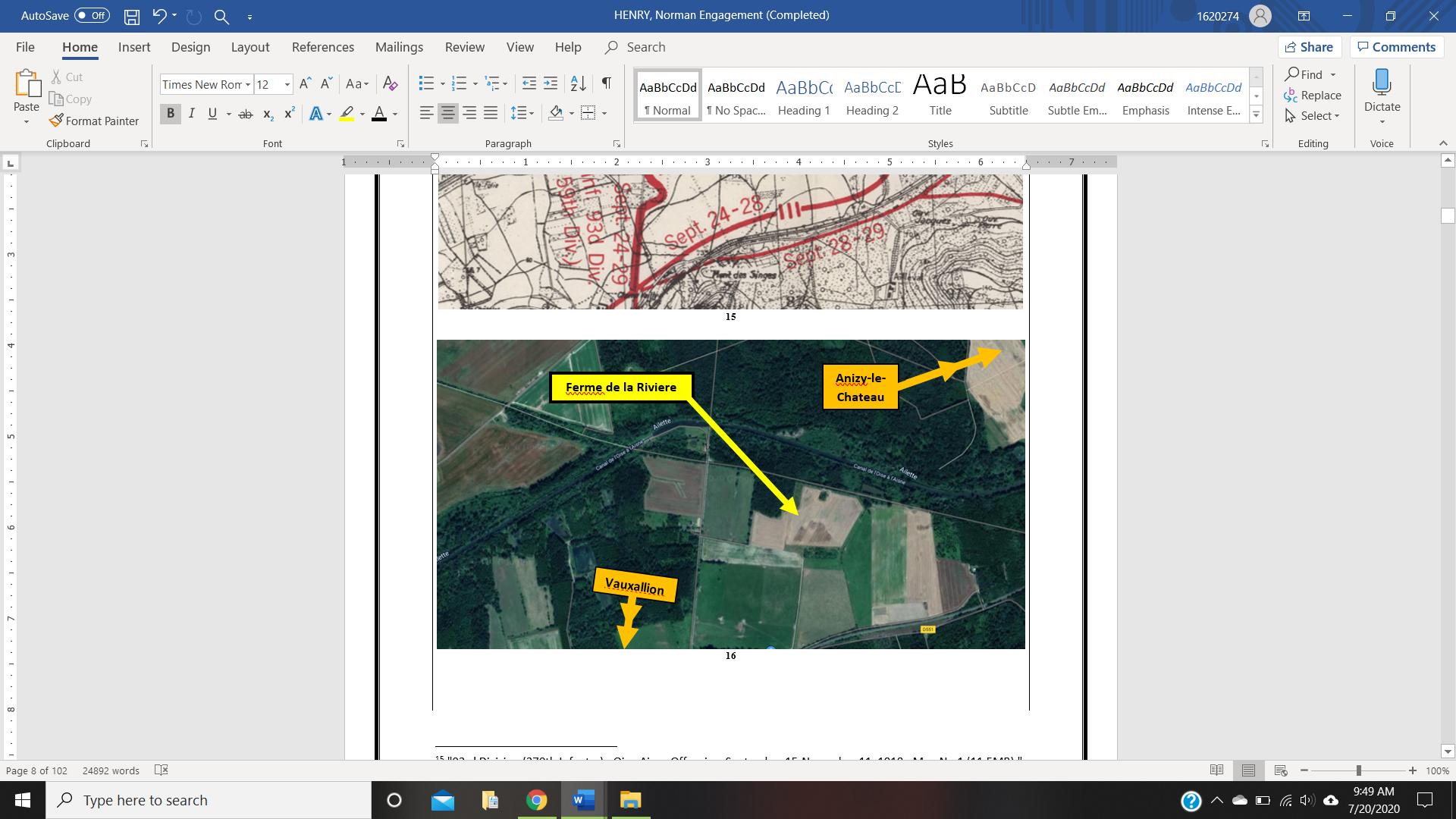
“France is no longer the beautiful, but grim and scepter-like she lay as a corpse, bleeding from a thousand gaping wounds, pitted by a million shells, disemboweled and upturned by the awful hail of aerial bombs The gardens, farms and foliage were poisoned by the deadly gas used to unsparingly by the fierce barbarians trees that lined either side of an erstwhile well-kept highway were twisted, hacked and uprooted by high explosives yet the Day of Peace was about to dawn and that which was left of France was happy.”
The only American unit to fight in the Oise-Aisne Offensive was the 370th Infantry Regiment where it was immediately attached to the French 59th Division, French XXX Corps, French Tenth Army immediately upon arrival at Soissons The 370th Infantry Regiment participated in the Oise-Aisne Offensive from Sept 15 to Nov 11, 1918
“While the 370th Infantry advanced with the French Tenth Army, over a hundred kilometers to the east the remaining three regiments of the 93rd Division [369th, 371st, 372nd Infantry Regiments] prepared to go into battle with the French Fourth Army as part of the Franco-American drive…”
Sept 29, 1918:
The Germans resisted stubbornly against the French 59th Division (370th Infantry Regiment attached) Although fighting was continuous throughout the day, only small gains had been made. Patrols of the 370th Infantry Regiment had crossed the canal and entered Bois de Mortier and were driven back by German machine-gun fire. The French Fourth Army withdrew its tanks that assisted with the assault to reconstitute the tank units, which had suffered heavy losses between Sept. 27 and Sept. 29.
Sept 30, 1918:
The French 59th Division (370th Infantry Regiment attached) continued its attack orders without a change in mission. The French captured the line of bastions in Foret de Pinon and the sawmill known as Scierie (west of Anizy railroad station).
The 3rd Battalion, 370th Infantry Regiment (attached to the French 59th Division) moved into a position along the railroad northeast of Vauxaillon and relieved 2nd Battalion, 370th Infantry Regiment (attached to the French 59th Division), excluding Company [F]. Company [F] remained along the canal and in the woods west of Ferme de la Riviere. At 3 p.m., 3rd Battalion, 370th Infantry Regiment (attached to the French 59th Division) and Company [F] (2nd Battalion, 370th Infantry Regiment (attached to the French 59th Division)) attacked and captured Ferme de la Riviere and established a position along the canal from the Pinon-Brancourt road bridge to the divisional boundary

Oct 2, 1918:
“With the American First Army struggling to advance in the Meuse-Argonne, the entire Franco-American offensive appeared on the verge of exhaustion ”
Oct 3, 1918:
The 370th Infantry Regiment engaged in “mopping up” operations (during attacks made by the French) south of the canal after the French captured Anizy Railroad Station on Oct. 1, and Sucrerie (the sugar factory) on Oct. 2. In compliance with instructions, the French 59th Division (370th Infantry Regiment attached) had organized its sector for defense and prepared to cross the canal and capture Anizy-le Chateau.
“The period of October 4-11 was marked by active patrolling and preparations to cross the canal and the Ailette River. Attempts to cross the canal were unsuccessful, although many indications of an impending German withdrawal were observed.”
Company [G], 2nd Battalion, 370th Infantry Regiment (attached to the French 59th Division) had been in support of the 1st Battalion, 370th Infantry Regiment (attached to the French 59th Division). During this time, patrols from 2nd Battalion, 370th Infantry Regiment and 3rd Battalion, 370th Infantry Regiment were between the line’s night and day with the objective of locating machine-gun nests in Bois de Mortier, as well as making necessary reconnaissance’s.
German Gen Georg on der Marwitz issued orders stating:
“It is on the unconquerable resistance of the Verdun Front that the fate of a great part of the Western Front, perhaps even of our nation, depends The Fatherland must rest assured that every commander and every man fully realizes the greatness of his mission and that he will do his duty to the very end ”
Oct 4, 1918:
Before dawn, a reconnaissance in the Bois de Mortier was ordered to the elements of the 2nd and 3rd Battalion, 370th Infantry Regiment (attached to the French 59th Division). The patrol consisted of volunteers, including Capt. Chester Sanders and 20 men.
At 3:30 a.m., the volunteer patrol had crossed the canal and penetrated the woods, approximately 50 meters east of Vauxaillon-Bois de Mortier Road. The mission of the patrol was to discover if the woods had been evacuated by the Germans. The patrol penetrated the German line by more than 100 meters, but was discovered and fired upon by numerous German machine-guns. The patrol retreated to the French lines under heavy shelling and machine-gun fire and did not lose a single man.
1st Battalion, 370th Infantry Regiment (attached to the French 59th Division) was ordered to make the following dispositions pursuant to Order No. 3330/s, Headquarters 59th Division, French Army: ·Company [A] was to be sent to the French 325th Infantry Regiment, French 59th Division. Company [B] was to be sent to the French 232nd Infantry Regiment, French 59th Division. These companies were to be used as reinforcements for said infantry regiments.
The 2nd Battalion, 370th Infantry Regiment (attached to the French 59th Division) was relieved by the 1st Battalion, 370th Infantry Regiment (attached to the French 59th Division) after an attack that had begun on Sept 27 The 2nd Battalion, 370th Infantry Regiment had gained possession of the railroad track and woods to the northeast of Guilliminet Farm The 3rd Battalion, 370th Infantry Regiment (attached to French 59th Division) patrolled the western part of Bois de Mortier
“From the 27th of September to the 4th of October [1918] the 370th was subjected to severe shelling and to murderous fire of numerous machine guns and rifles ”
“From 4 until 11 October, the 370th continued its active patrolling and prepared to cross the canal and Ailette River ”
Oct. 5, 1918:
Gen. Joseph Vincedon, commanding general of the French 59th Division, complained about the battlefield performance of the 370th Infantry Regiment. In response, Maj. Lloyd R. Fredendall, a member of Gen. John J. Pershing’s (commanding general of the American Expeditionary Forces) staff, inspected the 370th Infantry Regiment on Oct. 5 and Oct. 6. In Major Fredendall’s report, he “observed that the soldiers’ morale was good and showed no sense of panic or demoralization…many of the officers appeared poorly trained in basic skills such as map-reading, leading to confusion and poor coordination with the French commanders…[however,] the terrain was exceedingly difficult and disorienting.”
Oct. 6, 1918:
Vincendon went on leave, and Rondeau took command. The French 59th Division, French Tenth Army (370th Infantry Regiment attached) was assigned to the French XVI Corps. The French XVIII Corps took command of the French 36th Division. Upon taking command of the French 59th Division (370th Infantry Regiment attached), the French XVI Corps prescribed new boundaries for the zone of advance to the north, in case of German withdrawal. The French XVI Corps made plans to advance based on if the Germans continued their withdraw. The plans for the French 59th Division (370th Infantry Regiment attached) in a resumption of attack provided for an advance to the vicinity of Laon in three phases:
·Phase 1: Crossing the canal and Ailette River, and freeing Bois de Mortier by a general advance of all three regiments
·Phase 2: The 370th Infantry Regiment was to pass to the support immediately when Bois de Mortier was captured, while the two French regiments continued their movement
·Phase 3: The 370th Infantry Regiment was to attack Bois de Mortier from the south and by the French 31st Division from the west.

Then-Sgt. Henry received the Distinguished Service Cross and Medal of Honor recommendation for his actions on Sept. 30, 1918, near Firme de la Riviere, France:
“The President of the United States of America, authorized by Act of Congress, July 9, 1918, takes pleasure in presenting the Distinguished Service Cross to Sergeant Norman Henry (ASN: 1401525), United States Army, for extraordinary heroism in action while serving with Machine-Gun Company, 370th Infantry Regiment, 93d Division, A.E.F., near Ferme de la Riviere, France, 30 September 1918. While leading his squad under heavy fire, Sergeant Henry displayed great bravery and coolness by repairing a damaged gun under direct enemy observation. He proved of valuable assistance to the one remaining officer of his company in assembling the scattered units of his company after they had reached their objective.” Awarded DSC by CG, AEF, Dec. 6, 1918. Published in G.O. No. 37, W.D., 1919.
“For gallantry in action against the enemy at Ferme de la Riviere, France, 30 September 1918 Sergeant Henry, while leading his squad of machine gunners under enemy machine gun fire and artillery barrage, one of his guns became useless, and with great coolness he dismounted his gun, cleaned it, reassembled it, and put it back into operation This while in the open under heavy fire and at a time when the company was suffering considerable casualties About the same time his captain and one of the lieutenants were wounded and had to be evacuated, leaving only one officer in charge of the company, whom he very effectively assisted in locating the scattered units of the company after they had reached their objective, passing to the various points along the line which were under heavy fire, thereby rendering invaluable assistance to his company commander, and which enabled the latter to reorganize and get his command into formation for further advance. Throughout this action he displayed exceptional coolness in absolute disregard of his personal safety.” Letter, Medal of Honor Recommendations to the Adjutant General, AEF, from Commanding Officer of Headquarters, 370th Infantry Regiment. Roberts, T.A. 20 November 1918. Copy held at the George S. Robb Centre for the Study of the Great War at Park University, Parkville, Missouri.
Henry also received the French Croix de Guerre with Bronze Star, under Order No. 62, dated Nov. 24, 1918, for his actions on Sept. 30. A victim of poisonous gas inhalation, Henry did not seek hospitalization before returning to the U.S.. Henry and his company left Brest, on Feb. 2, 1919, and landed in New York City on Feb. 9. He was honorably discharged at Camp Grant on Feb. 24, 1919.


After his discharge, Henry worked as an electrician and plumber, and returned, for a short time, to chauffeuring between 1919 and 1925. Henry married Undine Margaret Johnson on March 11, 1920 in Chicago. They had two children: Charles Adolphus (1921-2003) and Adelaide Bella (1922-2016). The Henrys separated in 1922. Around this time, Henry began experiencing epilepsy-like symptoms, and became unable to hold a consistent occupation due to regular instances of incapacitation and exhaustion. Henry lived with his father between hospitalizations, and attempted to complete vocational training, believing that his previous experience as a chauffeur would no longer be feasible
“Can’t trust [his] nerves to drive in crowd Asks for reconsideration of case and training in line of less responsibility ”
Henry continued to move around the country with various labor jobs until becoming sick with an unknown illness, leading to admission at the National Veterans Home in Milwaukee, Wis , in the late 1920s Henry died of lobar pneumonia (unknown greater cause, potentially undiagnosed tuberculosis) on Oct 20, 1929 in Milwaukee He is buried at Wood National Cemetery in Milwaukee.
Undine Johnson Henry married Samuel Bell in 1937, and died in 1997, outliving her first husband by 70 years.
Distinguished Service Cross Citation Card, United States Army.
National Archives Military Personnel Records Set, Copy held at the George S. Robb Centre, Parkville, MO
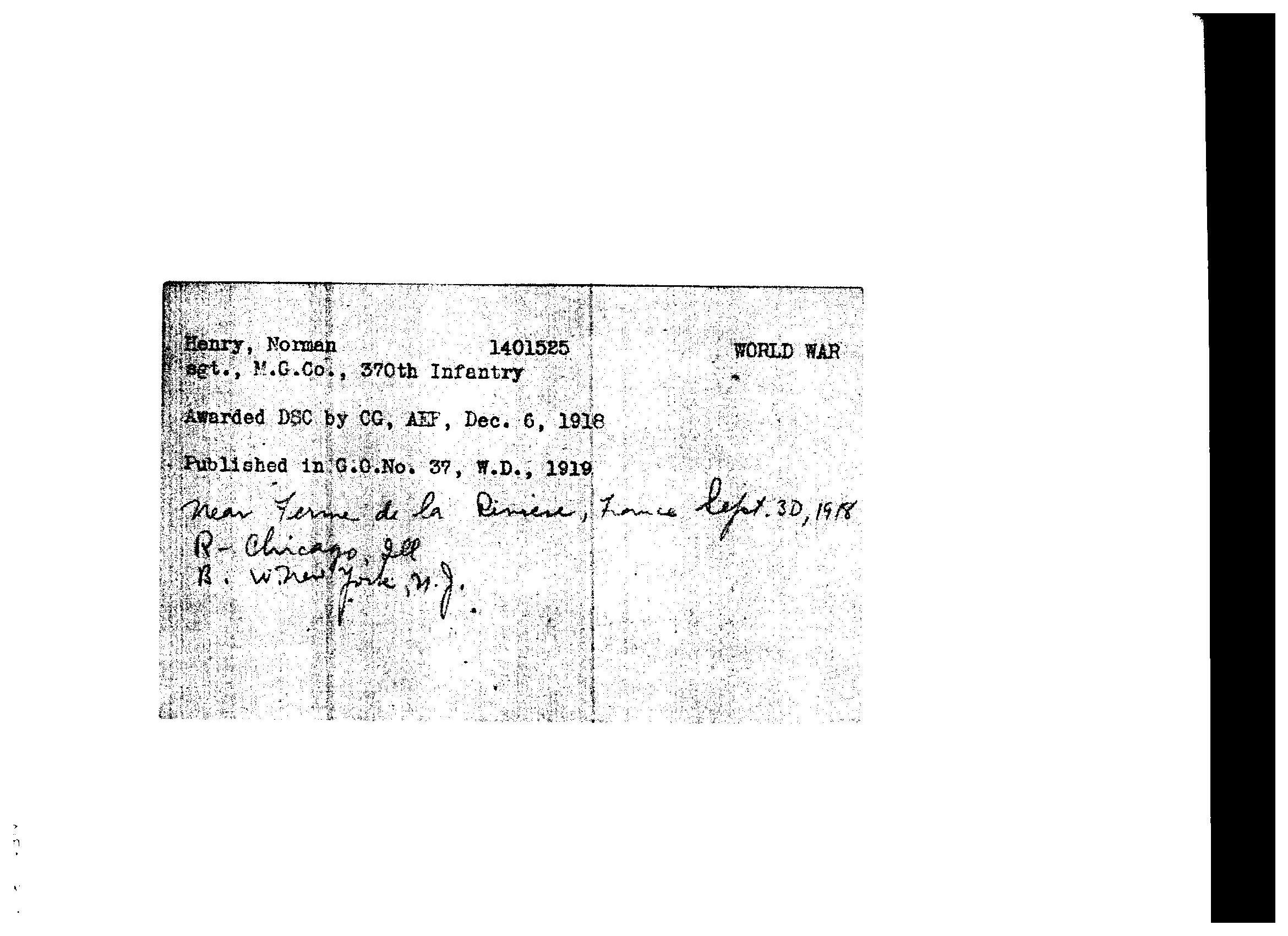
New Jersey, U.S., Births and Christenings Index, 1660-1931. [database on-line]. Provo, UT, USA: Ancestry.com Operations Inc, 2004. "Illinois, Cook County Birth Certificates, 1878–1922." Index. FamilySearch, Salt Lake City, Utah, 2009. Illinois. Cook County Birth Certificates, 1878–1922. Illinois Department of Public Health. Division of Vital Records, Springfield. New Jersey, U.S., State Census, 1905. [database on-line]. Provo, UT, USA: Ancestry.com Operations Inc, 2004.
Ancestry.com. 1900 United States Federal Census [database on-line]. Provo, UT, USA: Ancestry.com Operations Inc, 2004. Ancestry.com. 1910 United States Federal Census [database on-line]. Provo, UT, USA: Ancestry.com Operations Inc, 2004.
See Federal Board for Vocational Education Files, NFH 2.1-2.12 from National Archives Military Personnel Records, copy held at the George S. Robb Centre for the Study of the Great War, Park University, Parkville, MO.
Enlistment Record. United States Quartermaster Corps. 1920. Item NFH 13.9 from National Archives Military Personnel Records, copy held at the George S. Robb Centre for the Study of the Great War, Park University, Parkville, MO.
U.S., Army Transport Service Arriving and Departing Passenger Lists, 1910-1939. [database on-line]. Provo, UT, USA: Ancestry.com Operations Inc, 2004.
Google. Maps. Accessed July 20, 2020.
https://www.google.com/maps/place/02320+Vauxaillon,+France/@49.4912007,3.4099604,2176m/data=!3m1!1e3!4m5!3m4!1s0x47e84532e6 56dfa3:0xba35560d59f33c74!8m2!3d49.477102!4d3.406265
"93rd Division (370th Infantry) - Oise-Aisne Offensive, September 15-November 11, 1918 - Map No.1 (11.5MB)." Summary of Operations in the World War - Perry-Castañeda Map Collection - Historical - UT Library Online. Google Maps. Accessed July 20, 2020.
"Find out What the Weather Was like outside the Day You Were Born!" Find out What the Weather Was like outside the Day You Were Born! Accessed June 25, 2020. http://weather.sumofus.org/.
Harries, Meirion, and Susie Harries. The Last Days of Innocence: America at War, 1917-1918. New York: Vintage Books, 1998. Page 349-350. "SECOND BATTLE OF THE MARNE." The Second Battle of the Marne. Accessed July 08, 2020. http://www.worldwar1.com/dbc/2marne.htm. 93D DIVISION. Accessed June 22, 2020. https://history.army.mil/topics/afam/93div.htm#6. Page 25.
"Oise-Aisne Offensive, Aug-Sep 1918 - Second Marne/Oise-Aisne: U.S. Army Center of Military History." Oise-Aisne Offensive, Aug-Sep 1918Second Marne/Oise-Aisne | U.S. Army Center of Military History. Accessed June 22, 2020. https://history.army.mil/html/bookshelves/resmat/wwi/pt03/ch20/pt03-ch20-sec04.html#lg=1&slide=1.
"Under Fire with the 370th Infantry (8th I.N.G.) A.E.F. Memoirs of the World War : Braddan, William S : Free Download, Borrow, and Streaming." Internet Archive. Accessed June 23, 2020. https://archive.org/details/underfirewithinf00bradiala/page/84/mode/2up. Page 94. United States Army in the World War, 1917-1919. Volume 6. Washington, D.C.: Center of Military History, U.S. Army, 1988. Page 1.
"Oise-Aisne Offensive, Aug-Sep 1918 - Second Marne/Oise-Aisne: U.S. Army Center of Military History." Oise-Aisne Offensive, Aug-Sep 1918Second Marne/Oise-Aisne | U.S. Army Center of Military History. Accessed June 22, 2020. https://history.army.mil/html/bookshelves/resmat/wwi/pt03/ch20/pt03-ch20-sec04.html#lg=1&slide=1.
Cora, Paula B., and Alexander F. Falbo-Wild. “Supporting Allied Offensives: 7 August-11 November 1918.” Supporting Allied Offensives - 7 August-11 November 1918 - U.S. Army Center of Military History. https://history.army.mil/html/books/077/77-6/index.html. Page 53, 55, 61. Lengel, Edward G. A Companion to the Meuse-Argonne Campaign. Chichester: Wiley-Blackwell, 2014. Page 220.
93D DIVISION. Accessed June 22, 2020. https://history.army.mil/topics/afam/93div.htm#6. Page 29-30.
"93rd Division (370th Infantry) - Oise-Aisne Offensive, September 15-November 11, 1918 - Map No.1 (11.5MB)." Summary of Operations in the World War - Perry-Castañeda Map Collection - Historical - UT Library Online. Accessed June 22, 2020. https://legacy.lib.utexas.edu/maps/historical/ww1/index.html.
United States Army in the World War, 1917-1919. Volume 6. Washington, D.C.: Center of Military History, U.S. Army, 1988. Page 52. E.J. Scott. The American Negro in the World War. Chapter XV. Accessed June 23, 2020. https://net.lib.byu.edu/estu/wwi/comment/scott/SCh15.htm.
Harries, Meirion, and Susie Harries. The Last Days of Innocence: America at War, 1917-1918. New York: Vintage Books, 1998. Page 381. American Expeditionary Forces Command. 1918. Medal of Honor Recommendation for Norman Frank Henry”. United States Army. U.S., Veterans Administration Master Index, 1917-1940 [database on-line]. Provo, UT, USA: Ancestry.com Operations Inc, 2004. Cook County, Illinois, U.S., Marriages Index, 1871-1920. Illinois Department of Public Health records. Division of Vital Records, Springfield, Illinois. [database on-line]. Provo, UT, USA: Ancestry.com Operations Inc, 2004. Cook County, Illinois, U.S., Birth Certificates Index, 1871-1922. [database on-line]. Provo, UT, USA: Ancestry.com Operations Inc, 2004. Letter, Physical Condition Worsening. Henry, Norman Frank. 17 January 1921. Item NFH 9.17 from National Archives Military Personnel Records, copy held at the George S. Robb Centre, Park University, Parkville, MO. Report of Physical Examination, Pg. 1-2; Hospitalization of Claimant Note. United States Veterans Bureau. 19 June 1922 and 29 June 1922. Items NFH 12.88, 12.89, 12.91 from National Archives Military Personnel Records, copy held at the George S. Robb Centre, Park University, Parkville, MO.
Hospital Contact Report. United States Veterans Bureau. 20 February 1922. Item NFH 2.11 from National Archives Military Personnel Records, copy held at the George S. Robb Centre, Park University, Parkville, MO. Death Certificate, Original. Wisconsin Department of Health. 21 October 1929. Item NFH 7.1 from National Archives Military Personnel Records, copy held at the George S. Robb Centre, Park University, Parkville, MO. Wisconsin, U.S., Death Records, 1959-2004. Wisconsin Department of Health Services; Madison, Wisconsin; Wisconsin Death Records, 19071932. Ancestry.com, Provo, UT.
There is no expiration on valor. Every servicemember, that meets the legislative criteria, shall be researched and their descendants contacted. If interested in sponsoring an individual servicemember for research, please contact the George S. Robb Centre for the Study of the Great War at gsrcentre@park.edu.
Adoptions will be recognized on individual servicemember webpages, sponsorship webpage and Valor magazine.


The George S. Robb Centre for the Study of the Great War invites research investors to join the Valor Medals Review effort to properly recognize our servicemembers. While the research is supported by legislation (S. 1218/H.R. 2249) signed within the National Defense Authorization Act on December 20, 2019, no federal appropriations are funding the project.
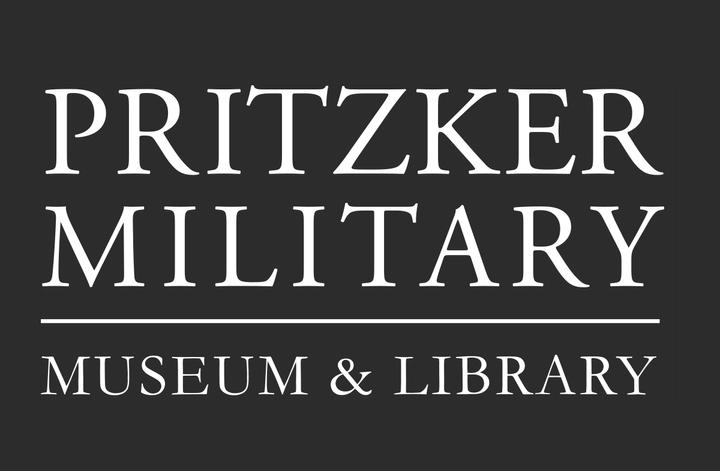
To discuss investing in the project, please contact: Nathan Marticke, Chief Advancement Officer Park University
(816)-584-6844
nathan.marticke@park.edu
GiveToday! advancing.park.edu/valormedals
Partners are critical to advancing the mission of the Valor Medals Review. Endorsement, research support or other non-financial support of the successful completion of the Valor Medals Review is invited.
The American Legion
ArmyAviationAssociation of America
AMSUS,the Society of Federal Health Professionals
AssociationoftheUnited States Navy
CommissionedOfficersAssociation ofthe USPublicHealthServices,Inc.
CongressionalBlack CaucusVeteransBraintrust
Fleet Reserve Association
Iraqand AfghanistanVeteransofAmerica
Jewish War Veterans oftheUSA
MarineCorpsLeague
MilitaryOfficers AssociationofAmerica

MilitaryOrderofthePurple Heart
Naval EnlistedReserveAssociation
Reserve OfficersAssociation
Service Women's Action Network
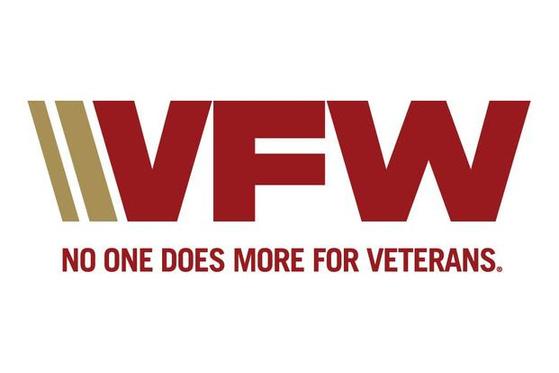
TheMilitaryChaplains Association of theUSA
TragedyAssistance Programfor Survivors
The RetiredEnlisted Association
USCG ChiefPetty Officers Association
USArmy WarrantOfficersAssociation
Vietnam Veterans of America
WoundedWarriorProject
To discuss becoming a strategic partner, please contact Dr. Timothy Westcott, Director, George S. Robb Centre for the Study of the Great War at Park University (816)-584-6364 or tim.westcott@park.edu

University
8700 NW River Park Drive, CMB 117 Parkville, MO 64152
Email: tim.westcott@park.edu
Telephone: (816)-584-6890
Website: https://gsr park edu
Facebook: George S Robb Centre for the Study of the Great War
LinkedIn: George S Robb Centre at Park University


Twitter: @CentreRobb
YouTube Channel: George S Robb Centre